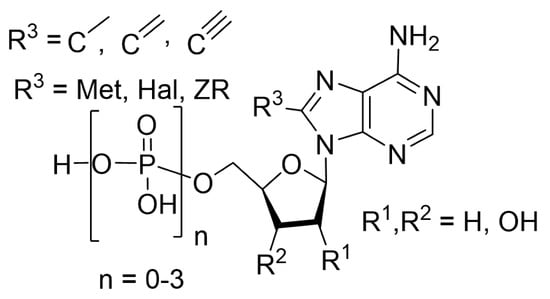Bond Formation at C8 in the Nucleoside and Nucleotide Purine Scaffold: An Informative Selection
Abstract
Share and Cite
Undheim, K. Bond Formation at C8 in the Nucleoside and Nucleotide Purine Scaffold: An Informative Selection. Molecules 2024, 29, 1815. https://doi.org/10.3390/molecules29081815
Undheim K. Bond Formation at C8 in the Nucleoside and Nucleotide Purine Scaffold: An Informative Selection. Molecules. 2024; 29(8):1815. https://doi.org/10.3390/molecules29081815
Chicago/Turabian StyleUndheim, Kjell. 2024. "Bond Formation at C8 in the Nucleoside and Nucleotide Purine Scaffold: An Informative Selection" Molecules 29, no. 8: 1815. https://doi.org/10.3390/molecules29081815
APA StyleUndheim, K. (2024). Bond Formation at C8 in the Nucleoside and Nucleotide Purine Scaffold: An Informative Selection. Molecules, 29(8), 1815. https://doi.org/10.3390/molecules29081815






